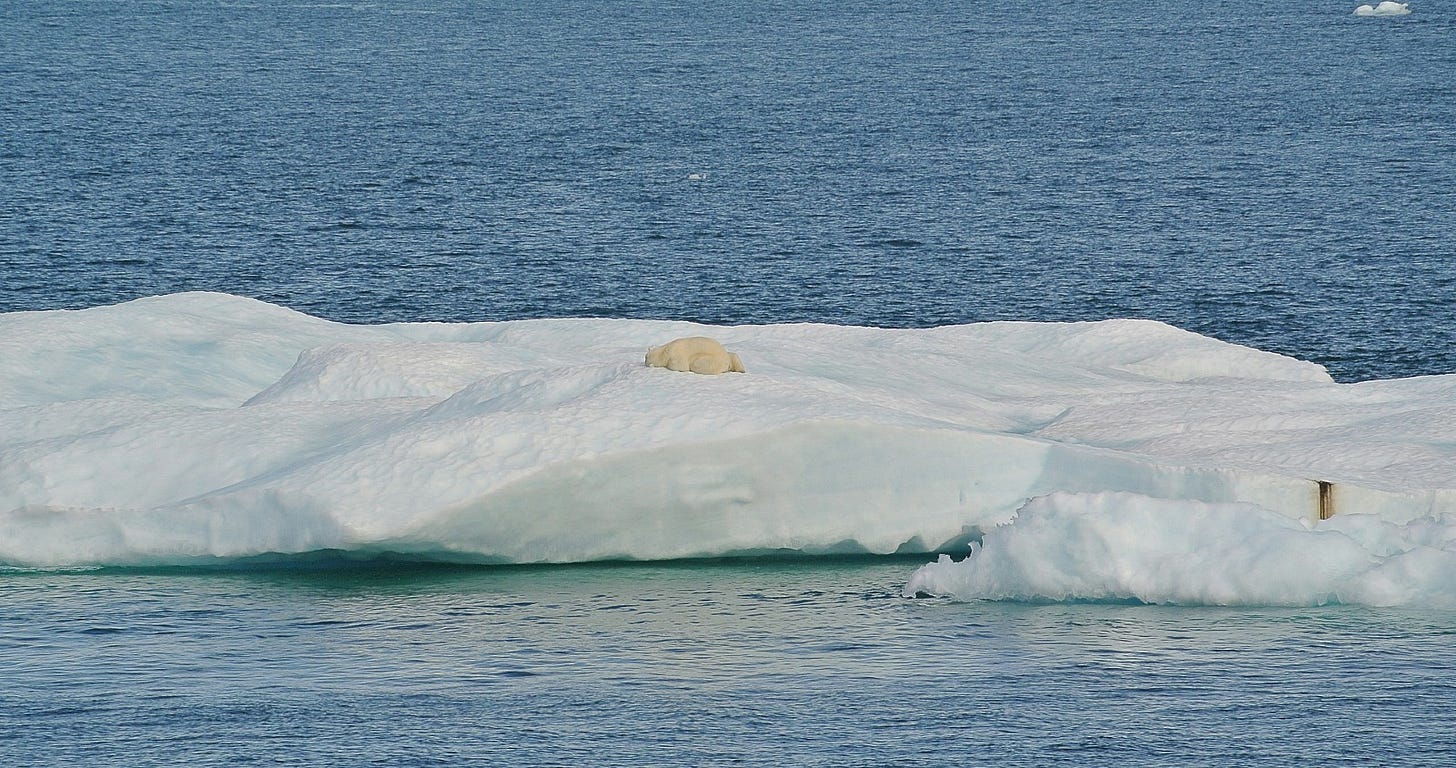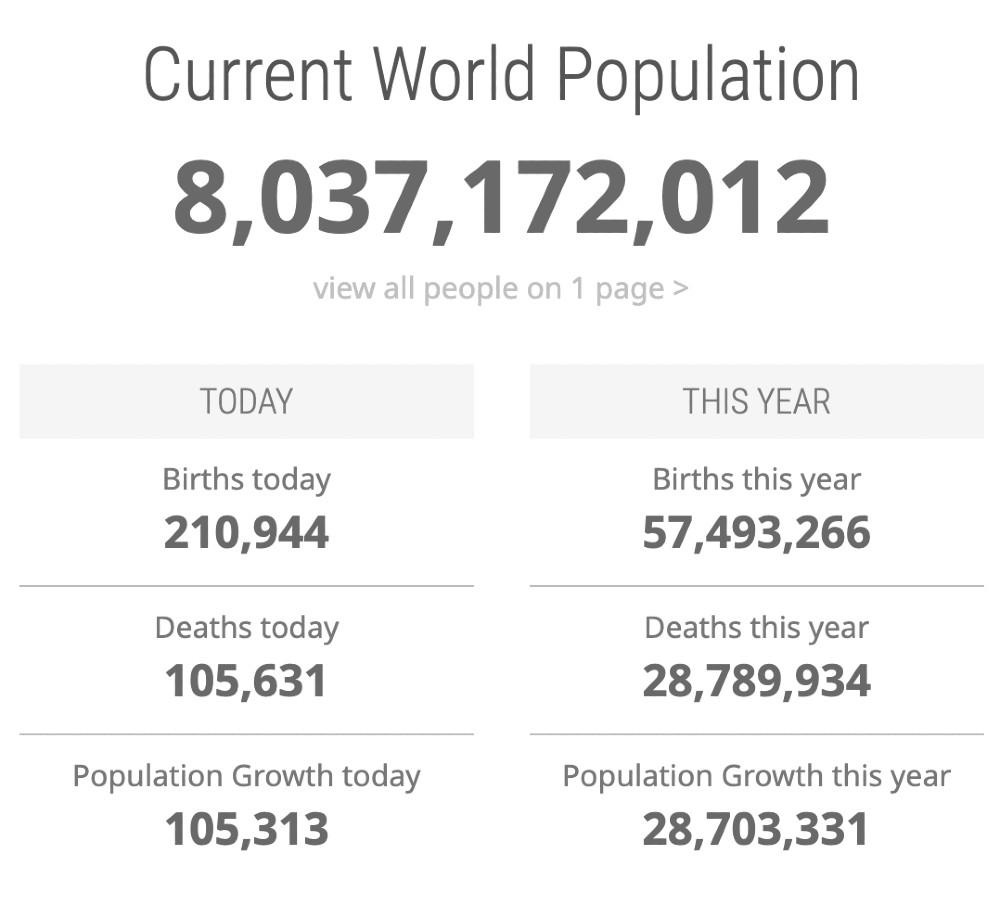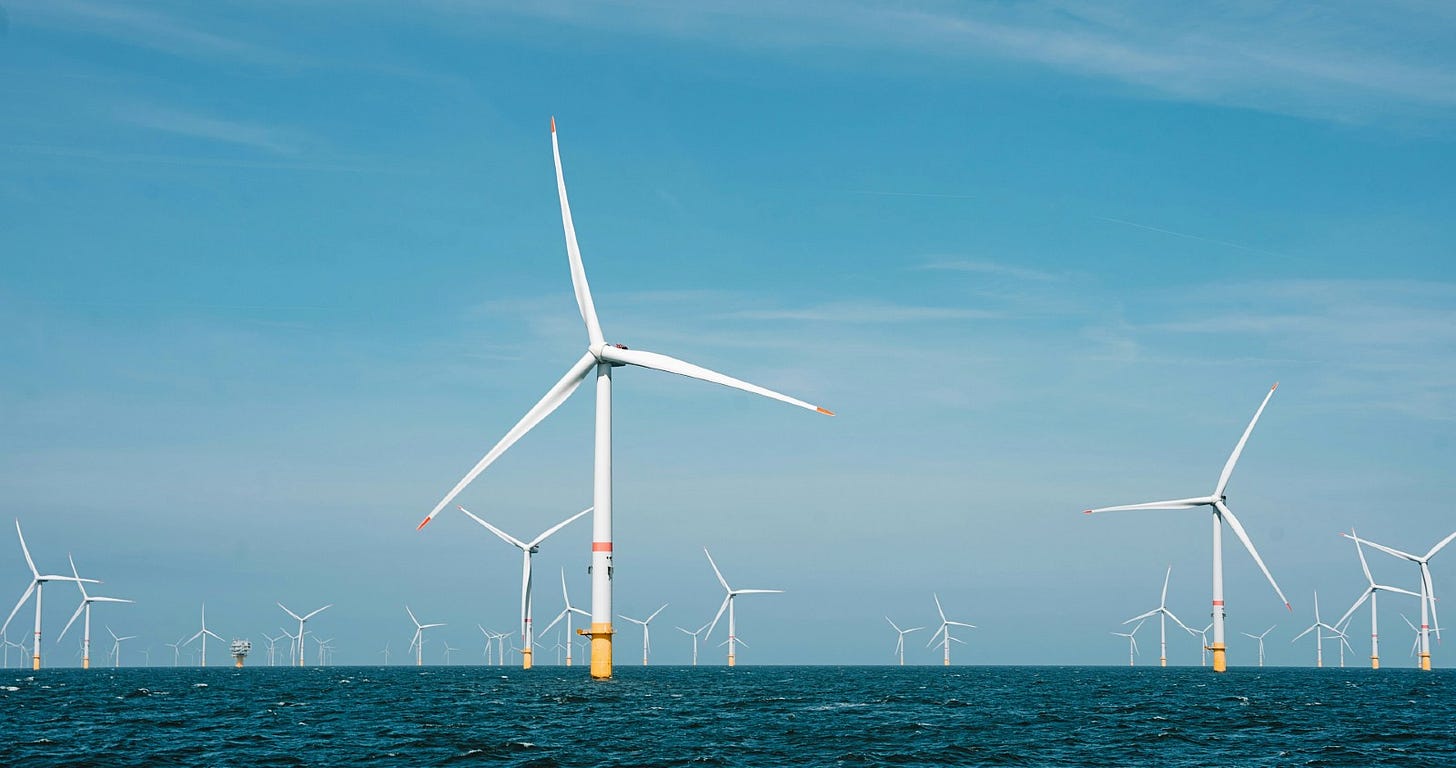Why Solving Climate Change Alone Won't Save Us
The Myth of Single-Solution Sustainability
It would be nice to fire a climate silver bullet at emissions to make climate change go away. If such munitions existed, all our troubles would be over. I think not...
Wouldn't it be wonderful if we could solve all our environmental problems with one elegant solution?
As someone who has spent decades studying ecology, I've lost count of how many times I've heard smart, well-meaning people say, "Just fix climate change, and everything else will fall into place."
It's a seductive idea, especially when our planet's challenges feel overwhelming.
Today, I want to show you why the "climate silver bullet" theory falls short and what that means for all of us trying to create a more sustainable world.
As we explore the climate fix, we’ll also realise that applying mindful scepticism will give you the tools to…
Cut through oversimplified environmental narratives
Understand why single-solution thinking can be dangerous
Develop a more nuanced view of sustainability challenges
Engage more effectively in environmental discussions
Make better-informed decisions about where to focus your own sustainability efforts
Okay, let's apply our curiosity and critical thinking skills to test if solving climate change alone would make humanity sustainable.
The answer matters for our future.
The climate change silver bullet option
Climate change is here and not for the first time in evolutionary history.
Many advocates for the human fix to what they see as the mess we created in the atmosphere and oceans are searching for the climate silver bullet to kill the nasty problem and make all our human troubles disappear.
Here is one of them.
In the quote below, Simon Propper, CEO of Context, a sustainability strategy business, in an article on fresh thinking suggests that the raft of sustainability issues is just housekeeping—the only problem is the climate.
“By trying to tackle everything at once, we’re diluting our impact, giving too much weight to secondary issues and too little to the really big one.”
Simon Propper, CEO of Context
Ah, yes, the climate silver bullet philosophy.
Propper’s logic is that many other sustainability and environmental issues will disappear if we tackle climate change. Find the solution to, let’s say, greenhouse gas emissions and carbon removal, load that bullet into a gun and fire it at climate change, and all will be sweet.
Well, that would certainly be nice.
One solution is easier to find, develop and roll out than a hundred. But while we are on analogies, the eggs are in one basket.
Here, I apply some simple, mindful, sceptic logic to the climate silver bullet solution to humanity’s sustainability.

Would the silver climate change bullet work?
Let’s take a look at a typical list of environmental issues, this one from the List of Environmental Issues Wikipedia page on the topic.
Climate change
Conservation
Energy
Environmental degradation
Environmental health
Genetic engineering
Intensive farming
Land degradation
Soil
Land use
Nanotechnology
Nuclear issues
Overpopulation
Ozone depletion
Pollution
Water pollution
Air pollution
Reservoirs
Resource depletion
Consumerism
Fishing
Logging
Mining
Toxins
Waste
Most of these are related to the broad concept of sustainability that we might take to mean, in Brundtland report fashion, “meeting the needs of the present without compromising the ability of future generations to meet their needs”.
And now, let’s see what would happen to these environmental issues if the climate was stable, not warming or cooling, but just staying still. In other words, it was fixed from excessive warming or cooling.
Whatever the climate silver bullet was—renewable energy, carbon capture, zero carbon emissions—it worked to kill the existential threat of climate change. We can be generous here and say the climate can be held stable at 1990 averages, a popular if arbitrary date used as a reference for many emission reduction targets.
Here is the same list of major environmental issues, only this time, the issues that would still be a problem under a stable climate wobbling naturally around the conditions in 1990 as the average are in bold…
Climate change
Conservation
Energy
Environmental degradation
Environmental health
Genetic engineering
Intensive farming
Land degradation
Soil
Land use
Nanotechnology
Nuclear issues
Overpopulation
Ozone depletion
Pollution
Water pollution
Air pollution
Reservoirs
Resource depletion
Consumerism
Fishing
Logging
Mining
Toxins
Waste
Oops, it would seem that all these issues, bar one, would still be there if the climate were fixed. And that one is climate change, the problem we fixed.
Here is another list of environmental challenges from a green living website that is typical of the less technical lists
Contamination of drinking water
Water pollution
Soil contamination
Wildlife conservation
Air pollution
Biological pollutants
Carbon footprint
Climate change
Consumerism
Dams
Ecosystem destruction
Energy conservation
Fishing
Food safety
Genetic engineering
Intensive farming
Land degradation
Land use
Logging
Mining
Nanotechnology
Natural disasters
Nuclear issues
Other pollution issues
Overpopulation
Ozone depletion
Resource depletion
Sustainable communities
Toxins
Waste
Three issues were fixed by firing a climate silver bullet and holding the global weather at the 1990s levels. However, we were generous, saying that a stable climate means we fixed natural disasters because tsunamis, floods, fires and storms occurred throughout the history of our planet, even before humans were around to suffer from them.
No, no, no, Mr. Propper, climate change is significant, but fixing it is no magic bullet for sustainability; it is nowhere near.
I agree that climate change will make many environmental and sustainability issues more challenging to fix, but the reverse is invalid.
Fixing climate—even if possible—does not make us all sustainable.
Don’t even think that it does.

Why is a silver bullet against global warming not a fix for sustainability?
The obvious answer is because of the ‘meeting the needs’ part of the Brundtland report definition.
8 billion people have a lot of needs.

All these people need food, water, shelter and well-being each and every day of every year for decade after decade.
This need can only be met with resources. Until we figure out a complete technological solution, most of these resources come from the natural environment via our extraction and manipulation processes.
Climate affects natural resources, certainly, and a changing climate will mess with patterns of plant production everywhere on the planet. Still, a stable environment does not make resource use miraculously sustainable.
That only happens if we manage resources sensibly and match our demands to their ability to supply. Ideally, using the yield from natural capital while retaining the principle.
Here is a screenshot of the same population clock taken a little under three years (1,042 days) after the one above

The difference is that there are now 235,948,199 more people to feed, clothe, and house than there were two months after the WHO declared COVID-19 was a pandemic.
At the average global rate of emissions per capita in 2021 (4.7 tCO2e per annum), these people will emit roughly 1,109 million tCO2e annually throughout their adult lives. That is the same as the total emissions during 2016 of the UK, Italy and France combined.
Fix the climate for sustainability?
Think about it.

Being a mindful sceptic on silver bullets
Climate change is a challenge.
It makes meeting the needs of humanity much more complex than if the climate were predictable and benign. It makes sense then to reduce emissions wherever possible, sequester as much carbon as possible into soils and vegetation, transition rapidly away from fossil fuel energy and prepare to adapt for when the climate changes as it inevitably will.
This version of the climate silver bullet is more like buckshot in a 12-gauge shotgun than a single slug—it's the only way to hit a fast-moving, slippery target.
All these strategic things and the myriad of specific actions that flow on from them are critical, however challenging they might be.
But this will not suddenly make us all sustainable.
For that, we must challenge ourselves to consider consumption, waste and how we use nature, especially the tendency to allow externalities.
This is more than just reducing fossil fuel use, less land clearing, and praying that the climate will return to ‘normal’ if we reduce emissions, whatever that might mean.
In short, we have to get real, for there is no climate silver bullet. And even if there were, firing it would not feed everyone.

Postscript on net zero emissions
Suppose there was a magic emissions bullet.
In a miracle of human ingenuity, we quickly turned our transport electric, our energy generators became fusion reactors, and we stopped cutting down trees to grow food. Overnight, the three most significant sources of greenhouse gas emissions were stopped dead in their tracks.
Great success.
Now, what happens to the climate?
It continues to warm, and most associated extreme weather consequences happen.
Emission reduction is a most sensible precaution. However, it has to go together with sequestration to remove from the atmosphere a significant amount of CO2 that human activity has added to it, or the effort is pointless.
Mindful Momentum
The Local Environment Audit
Take a 30-minute walk in your neighbourhood with a notebook. List every environmental issue you can spot—from overflowing trash bins to car exhaust, from water runoff to habitat loss.
Now imagine climate change was magically fixed tomorrow. Cross off only the issues that would genuinely disappear.
What remains tells a powerful story about sustainability beyond climate change. Bonus: do this with friends or family and compare observations.
If you would rather stay at home, try this one…
The News Clipping Challenge
Collect one headline or article about climate change daily for a week.
Create a simple two-column journal where, in one column, you can write down what the article claims will happen if we fix climate change. On the other, list all the environmental issues the article doesn't address.
After a week, you'll have a fascinating visual map of how media oversimplifies sustainability.
Plus, you'll develop a natural scepticism toward silver bullet solutions while building awareness of interconnected challenges.
Key Points
The idea of a "climate silver bullet" where fixing climate change alone would solve our sustainability challenges is appealing but fundamentally flawed. When examined through mindful scepticism, it becomes clear that even if we could magically stabilise the climate, most major environmental issues, from soil degradation to biodiversity loss, would persist.
Population growth adds another critical dimension to sustainability beyond climate impacts. With over 235 million people added to Earth in just three years, the challenge of sustaining food, water, and resources exists regardless of climate stability. These new humans will generate emissions equivalent to multiple European nations, highlighting how demographic realities intersect with environmental challenges.
True sustainability requires addressing multiple interconnected challenges simultaneously. While climate change makes meeting humanity's needs more complex, solutions must extend beyond emission reduction to transform how we produce food, use resources, structure economies, and protect ecosystems. A systems approach, rather than silver bullet thinking, is essential.
Net zero emissions alone cannot reverse climate change impacts already locked in. Even if humanity achieved zero emissions through technological breakthroughs, the climate would continue warming from existing atmospheric CO2. This demonstrates why sustainability requires immediate emission reduction and long-term systemic changes to how human societies function within planetary boundaries.
You Might Also Like
Curiosity Corner
This issue of the newsletter is all about…
Even if we could magically stabilise the climate tomorrow, we'd still face a world where 235 million new humans need food, water, and resources - proof that true sustainability requires tackling multiple challenges simultaneously rather than hoping for silver bullet solutions.
1. Will climate change destroy humanity? A better question is...
How do different environmental challenges interact with climate change to affect human well-being? This question moves beyond apocalyptic thinking to examine systemic relationships, encouraging analysis of solutions rather than paralysis.
2. Can we solve climate change? A better question is...
What other sustainability challenges persist even if we achieve net zero emissions? This question acknowledges climate action while pushing us to consider all our environmental challenges.
3. Why aren't we fixing climate change faster? A better question is...
How does population growth affect our ability to achieve both climate stability and broader sustainability goals? This question introduces the crucial demographic dimension often missing from climate discussions and highlights interconnections between challenges.
4. Is climate action worth the economic cost? A better question is...
How can we meet the basic needs of 8 billion people while staying within planetary boundaries? This question reframes the discussion from a false economy-versus-environment dichotomy to focus on the real challenge of human well-being within ecological limits.
5. Who's to blame for environmental problems? A better question is...
What systemic changes could help us address multiple sustainability challenges simultaneously? This question shifts focus from unproductive finger-pointing to identifying practical solutions that acknowledge the complexity of our environmental predicament.
These better questions encourage curiosity, critical thinking and a dash of awareness, the hallmarks of the mindful sceptic's approach.
In the next issue…
When Saving More Means Using More
Have you ever noticed how buying energy-efficient appliances makes you less worried about leaving them on? You're not alone.
Next week, we'll dive into a fascinating paradox that explains why being more efficient often leads to using more resources, not less.
It's a story that begins with coal in Victorian England and ends with your smart thermostat.
Creating content that bridges academic rigour with practical insight isn't quick work, even with a chatbot or two for company.
It requires extensive research, careful analysis, and more coffee than is probably healthy.
If this evidence-based approach to environmental thinking has proven valuable in your professional or personal context, your support helps sustain this work… And keep the newsletter free.






Rethinking climate "solutions" and "objectives" into multiple "environmental problems" that are inextricably linked to one another builds a better foundation to identify real actions we can take. Now, of course we just need everyone to wake up and say "I thought I understood this but I don't really. I need to learn more. Can we talk about how these issues are linked so I can implement some real changes in how my family and I live?" Should be easy, right?